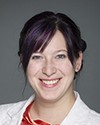That's an excellent question.
As an example, a number of years ago the Granatstein report highlighted that the officer corps didn't have degrees and needed more formal education, which would be beneficial to the officer corps. The army—the Canadian Forces—embarked on a deliberate process.
If you move it forward, even in the 2003-05 time period before Afghanistan kicked in, we embarked on a renewed emphasis on professional military education. The old OPMEs, as they’re called, are an example. On various subjects, such as the impact of science and technology on modern warfare, or the procurement system, or whatever, we would train those officers up. We called it the army junior officer staff qualification, which would link into various courses. We constantly renew our courses and our professional military education.
When I was commander of the combat training centre at Gagetown, I coined the term that many now use, that there is no such thing as a steady state. Every course we run is a pilot. What that means is that we have to be honest and reflect on what we have just done and make sure that the next serial is ready to go. So we have evolved education and training.
We have taken a really good look at our army operations course, which is the most important course in the officer corps. It's taught at the staff college in Kingston. It used to be entirely done in residency. It now has a significant piece, about seven weeks long, that's done by distributed learning. It keeps the officers at home and allows us to align the training of the reserves with the regular forces in the same way, along similar subjects, although they're taught by different members of the directing staff. It allows us to focus what we do on the residency piece more towards operational training. So we've evolved.
We're trying to introduce more and more simulation, and more and more technology into training. But we still want to make sure that it's grounded. So every day we try to make sure that the balance between education and individual training is within the experience set.
So I would like to think that we've responded in a way. We spend a lot more time on those subjects—on law of armed conflict, etc.—than, say, 10 to 15 years ago.



